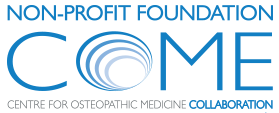The role of osteopathic manipulative treatment in neurological disorders: A critical review with clinical advice
| By Patrick van Dun | 0 Comments
Since more people age and live longer with chronic disease, it is important to develop complementary and adjunctive approaches to improve body homeostasis and ensure the highest possible level of well-being for people affected by neurological disorders, besides the known benefits related to neurorehabilitation. In this context, osteopathic manipulative treatment (OMT) should be considered a […]
Continue reading...






